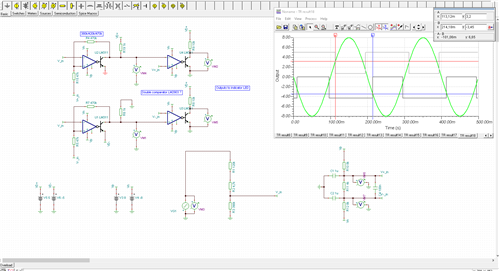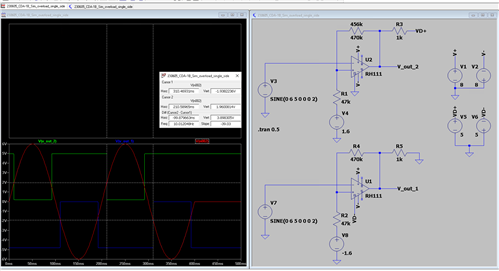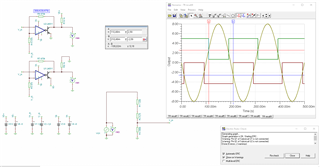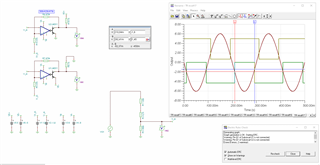Other Parts Discussed in Thread: LM111, TINA-TI,
Hello,
I would like to build a bipolar window comparator with hysteresis. The input signal is a sinus waveform, 5 Hz and 8 V peak. Here is my simulation:

The simulation is not working properly if the input sinus of U1 and U2 is +- 8V and the supply voltage is +-8V. So I divided the input sinus by the factor 4/3 to +- 6V (would be the worst case in the real application). The problem I have is, that the comparators on the negative and positive side are not working symmetric even if the voltage dividers are at the same voltage levels (proportions). The hysteresis and switching point from U2 is determined by: R4, R15 and +1.6V, +5V and GND. From U1 it is determined by R7, R5 and -1.6V, -5V and GND. I would expect that it should behave symmetric. I would like to have the switching points at +-1.9 V (high level) and +-1.55 V (low level). U3 is just a level shifter and U4 is an inverter, the signal from there would go directly to a LED.
If I do the same simulation in LTS with a comparator with a similar internal construction it is symmetric:

Someone has a hint what's wrong here?
Kind regards,
HD



